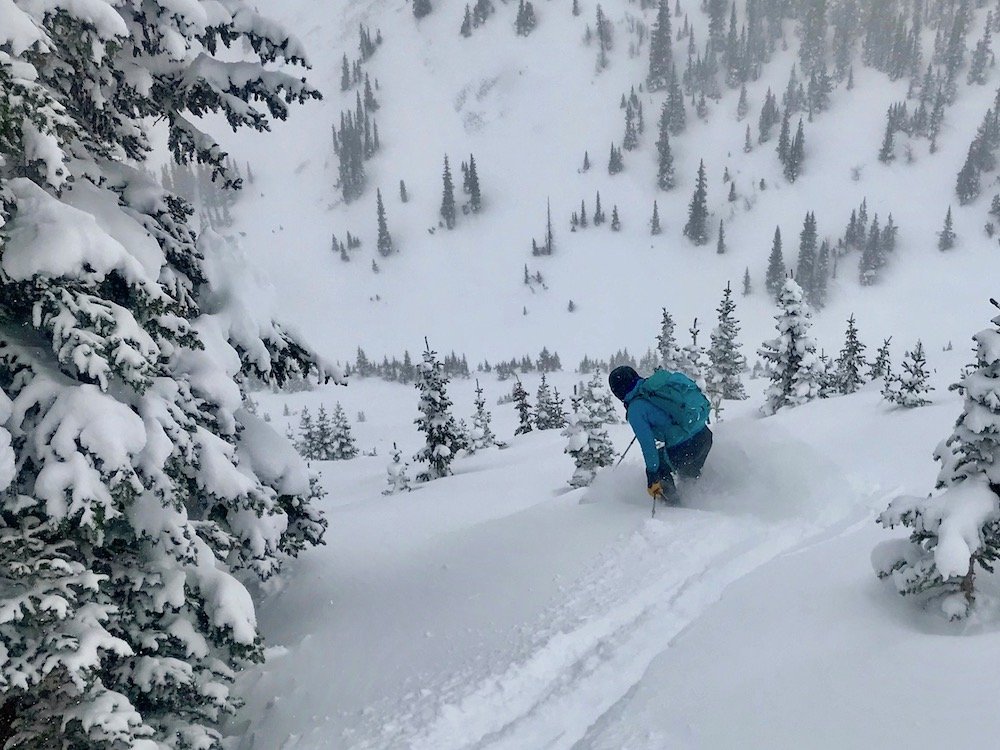
What’s in the Pack?
A comprehensive gear and apparel list for backcountry skiing
PERSONAL GEAR will vary with conditions and objectives, but this list is my standard kit 90% of the time:
Pack: 30-40L in size, preferably “ski-specific” with a dedicated avalanche rescue pocket in the front. Air bag packs can be great to reduce your vulnerability if caught in an avalanche, but come with added weight and bulk.
Skis: Appropriate for the current conditions. A quiver with a few options can be nice to choose the best for the conditions/objective. Ensure bindings are adjusted properly to the boot you plan to use. Optional use of leashes.
Skins: Correctly cut skins for the chosen ski.
Boots: I prefer a beefier (better performance) “4 buckle” boot for shorter objectives, and a lighter (more comfortable) “2 buckle” boot for big days or multi-day trips.
Poles: Either fixed or adjustable. Longer than normal for skinning can be beneficial.
Avalanche rescue gear: Transceiver/Beacon (modern, 3-antenna, optional harness), Shovel (metal, collapsible), and Probe (~300cm long)
Helmet: Not a bad idea to protect the noggin.
Goggles and sunglasses: I generally prefer sunglasses on the ascent and goggles for the descent.
Gloves: One thinner pair for hiking and one thicker pair for transitions and descents.
Communication: Phone (in airplane mode), Satellite Communicator (ie Garmin Inreach), and Radio (VFH for outside help, and FRS for comms within the group)
GPS watch and/or altimeter
Water: I often enjoy a thermos with a hot drink such as tea, broth, or electrolytes.
Snacks: Think more easy to consume and digest calories than a big picnic lunch.
Sunscreen and lip balm
Headlamp
GROUP GEAR Not everyone in the group needs to carry all these items, and they can be split amongst the crew. As a guide, I will typically carry these.
First Aid: A kit suitable for handling emergency response while in the field. Think more life, limb, and medication than bandaids.
Repair Kit: Sufficient tools and accessories to fix, adjust, and mend our gear to get us back into the front country safely.
Rescue Sled and Shelter: Often a large, lightweight tarp with sewn webbing to create a sled for evacuation of an injured partner or build a backcountry shelter. Typically paired with a small, lightweight air mattress for comfort and insulation during transport of patient.
Snow Study Kit: Snow saw, thermometer, grain ID card, knotted cord, collapsable ruler, loupe.
APPAREL Greatly varies with conditions and objectives
Beanie and ball cap
Buff/facemask
Puffy jacket: I generally prefer synthetic insulation during winter activities due to better insulation value when wet. Size/thickness of puffy will vary based on expected temperatures.
Hard shell jacket: Typically lives in my pack, ready for wind, snow, or rain to attack.
Soft shell jacket or wind shirt: Great for the uphill when chilly, or for all day use during calm weather.
Sun hoody and/or baselayer shirt
Hard shell OR soft shell pants: I choose one or the other base on the precipitation and wind expected.
Thin baselayer pants
Ski socks